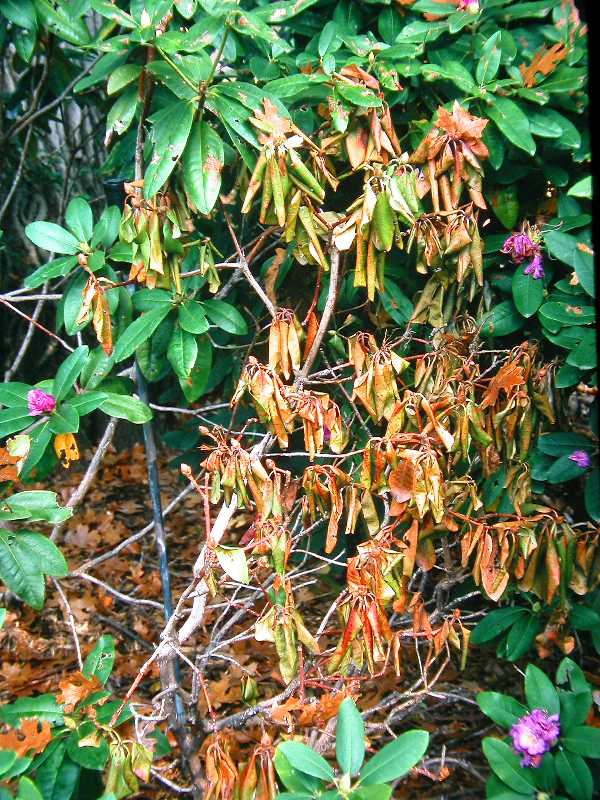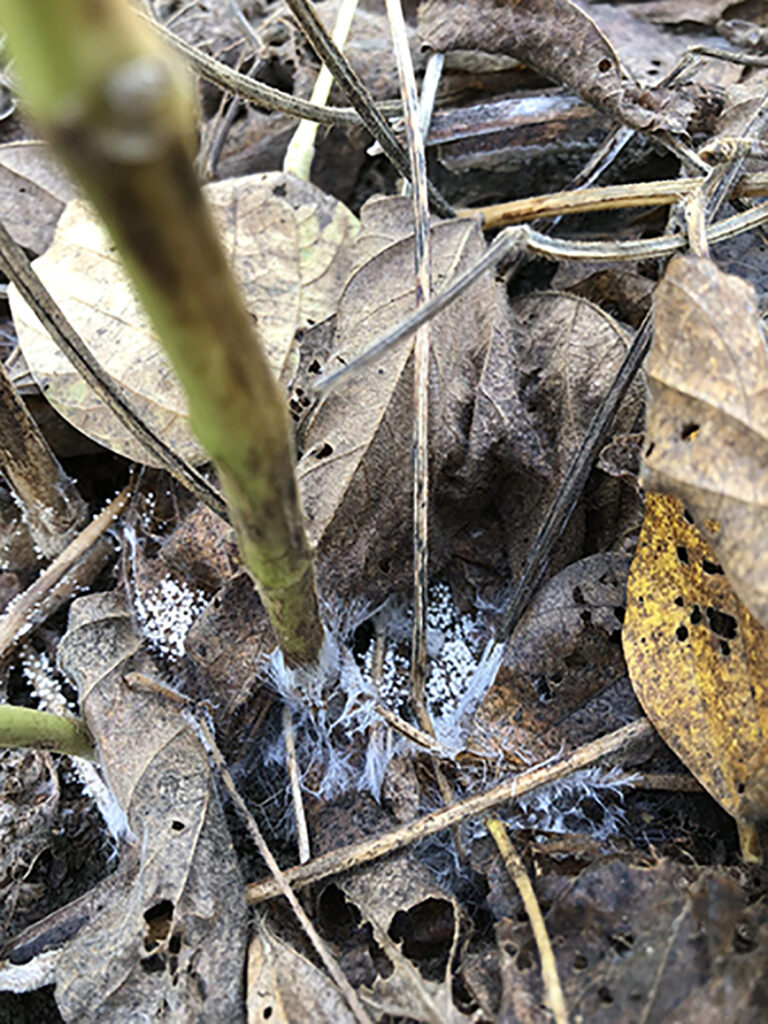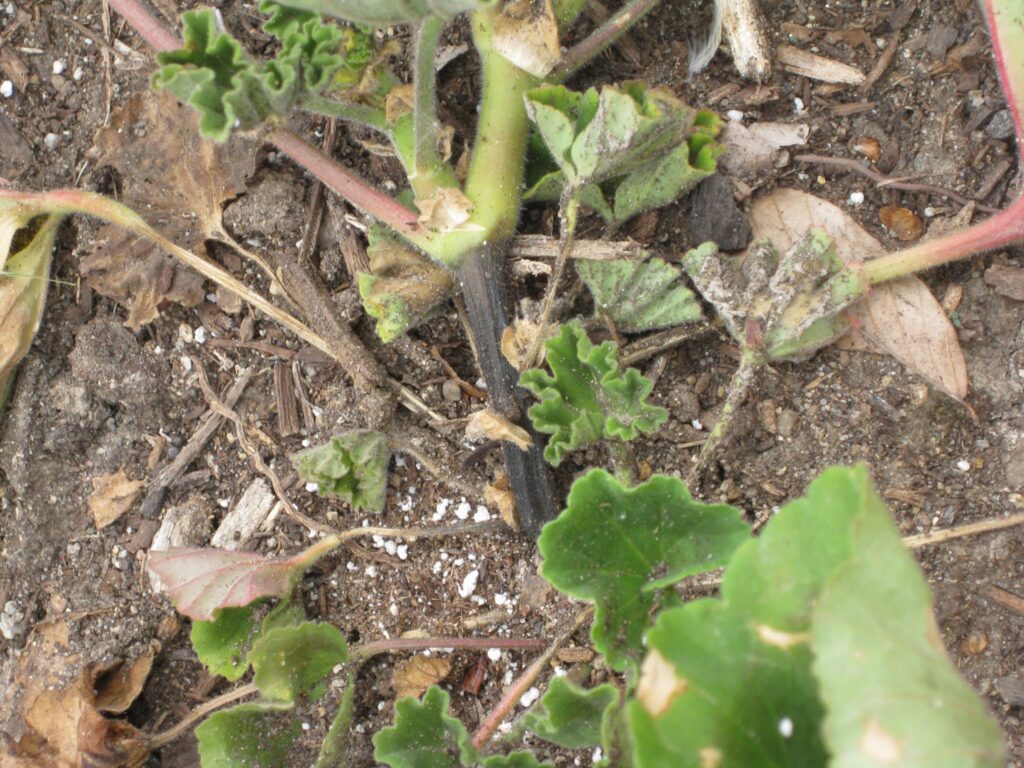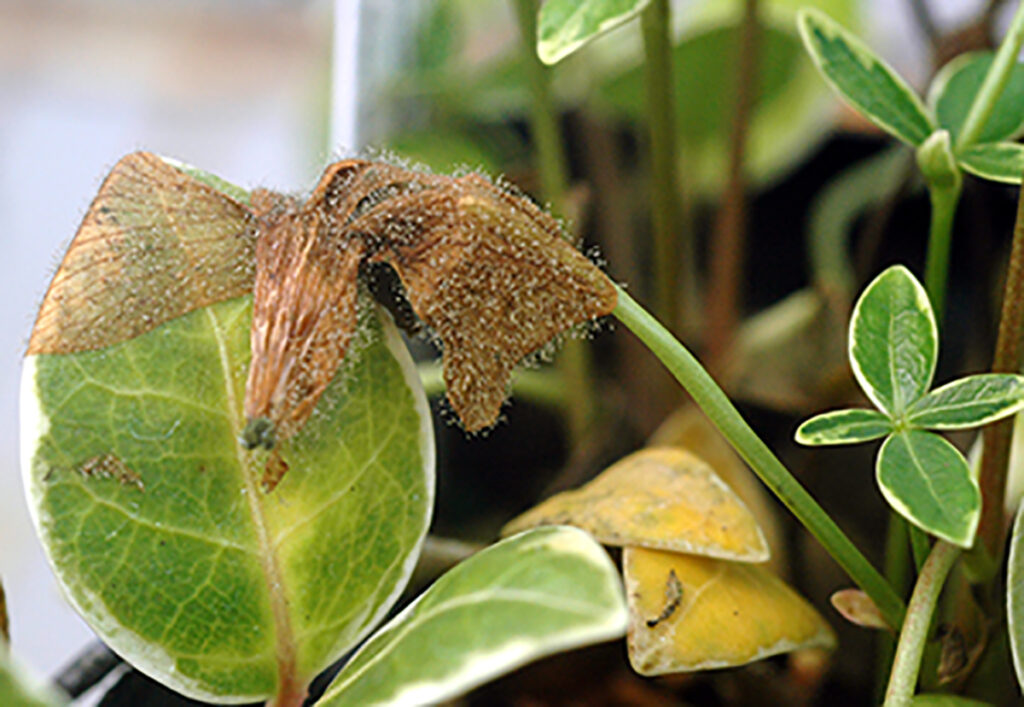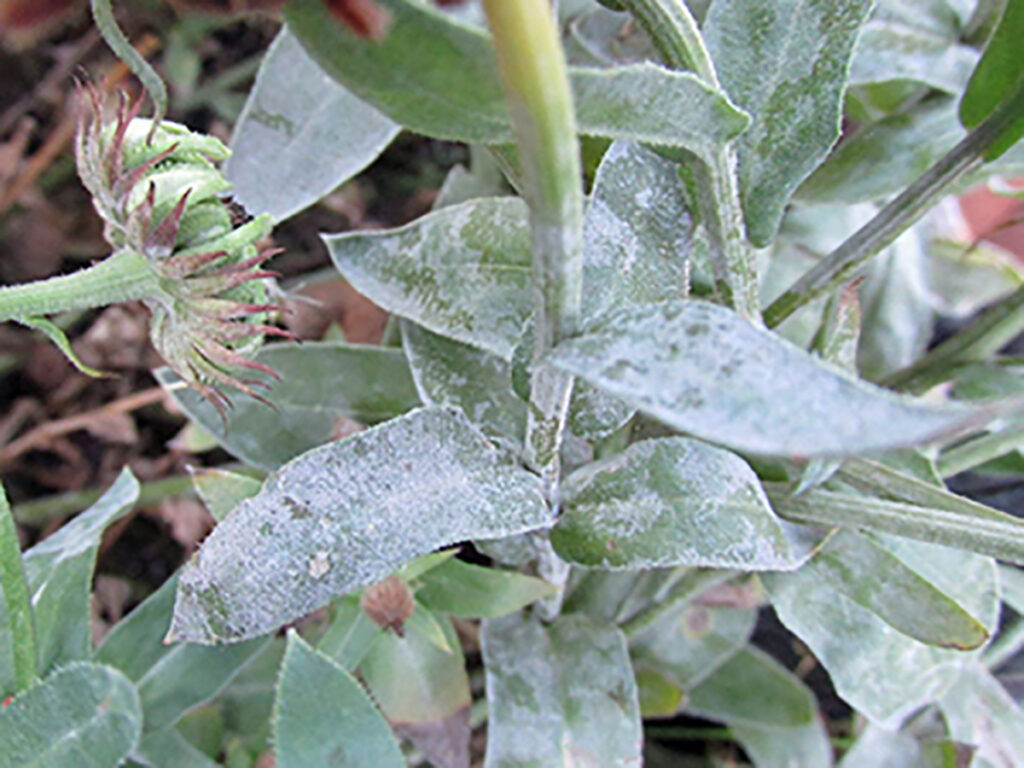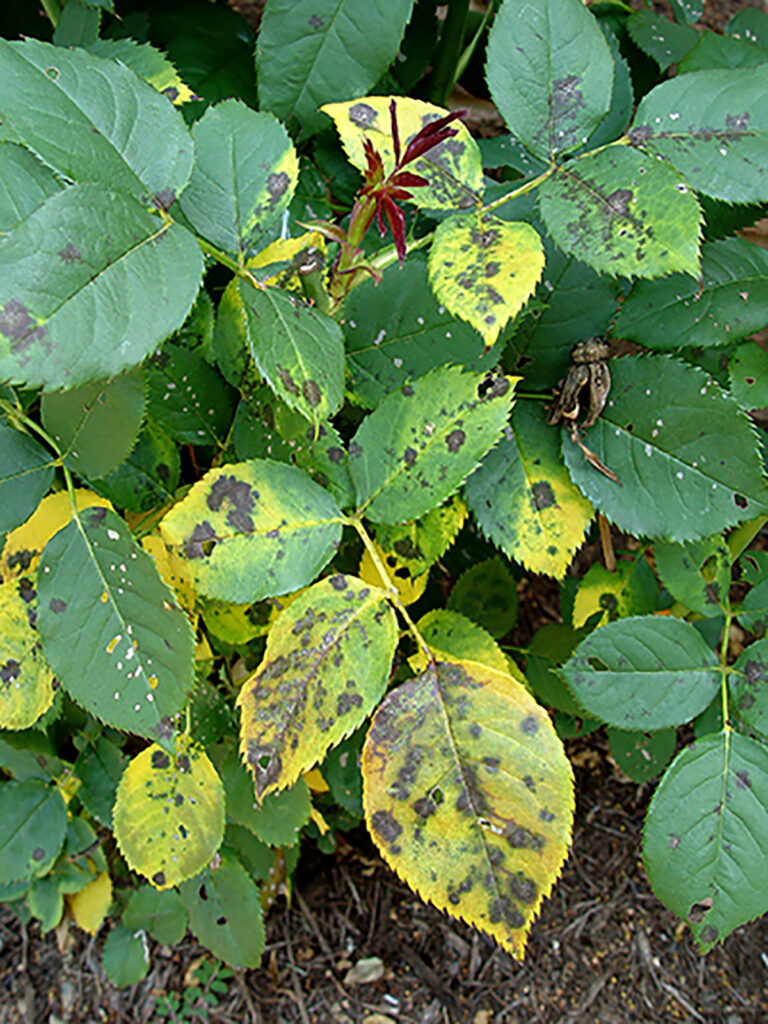Phytopthora Root Rot– Phytopthora is a soil borne pathogen that causes crown and root rot diseases of many herbaceous and woody plants. The Great Hill landscape has a lengthy history of phytopthora presence as it has existed in the soil of many gardens since an old water source was tainted in years past. Most recently, we tested positive for phytopthora in the English perennial garden when sample plants displaying wilt symptoms were sent in for testing. Beyond wilting, affected plants become dull and often change color or appear girdled as they slowly decline, even despite having adequate water and drainage. As we do not have an irrigation system in the English garden, we do rely on over head watering, which can encourage rot diseases. In this case however, we believe the pathogen was preexisting either in the soil or in the plants brought in in recent seasons as this garden has excellent drainage and is carefully maintained.
In order to manage this disease, we’ve removed all plants showing signs of infection, and will not replant until signs of control are observed. We’re extra vigilant with sanitation as far as tools and materials in this garden and, we’re currently treating (via our certified applicator) with scheduled applications of fungicides.
Southern Blight- While we have not found southern blight in specimen testing recently, we’ve been continuing our efforts to prevent recurrence of the disease that began in the middle if the 2016 season. Southern blight is an aggressive fungal disease that is extremely hard to eliminate. It occurs in the early summer months, attacking plants below the soil at the roots, leading to wilt and death. It is easily identified, when well established, by the presence of mycelia (clusters of white fungal masses which eventually turn brown) at the plant base upon close inspection. When we learned of our blight infection, we removed a large portion of plants and soil in the English border garden where a variety of perennials were symptomatic. These areas were left bare for the last half of the growing season and the first half of the following season. Then, new plants and clean soil were brought in using careful and sanitary planting methods. We continued our fungicidal spray schedule for two seasons following the replant.
Pythium Root rot– Pythium root rot is another fungal infection resulting from periods of increased moisture in the soil. The gilded bird bed, a focal annual bed in our formal garden, is where we have had some annuals become infected with this pathogen in recent seasons. While over watering is often the cause, we believe it was exacerbated by the rainy, cool growing season we had experienced that particular spring and summer. Infected plants wilt, yellow, and quickly die and the disease is very hard to manage once symptoms are present. As with most fungal diseases, taking steps towards prevention pre-planting is much more effective than attempting eradication once the disease is present. In our case, we had to remove completely the annual affected (celosia) as well as a variety of surrounding annuals, treat the bed with a fungicide, and replant with less susceptible options.
Botrytis Blight- Also known as gray mold, botrytis is a fungal disease that affects the buds, flowers and leaves of bulbs and many other landscape plants. We’ve noted it most often on begonia, roses, peony, and tulips. The severity of the disease is dependent on weather conditions as well as early detection, cultural practices utilized, and preventative measures taken in any given season. Infected plants develop brown spots and flecks on leaves, stems and flowers. When the weather turns wet or humid the plants become covered in a gray mold. We’ve found the best prevention in adequate plant spacing. Botrytis develops quickly and spreads rapidly when plants are crowded allowing for little air circulation and or water evaporation. Avoiding overhead watering when possible works to prevent the onset of botrytis as well as using sanitary practices such as removing and destroying infected plants and frequently cleaning tools and equipment. Our last method of control is the use of fungicides. Plants are costly, and in an effort to preserve as much of the original planting as possible, we utilize fungicides (applied by a certified applicator) to help control botrytis and other fungal pathogens..
Powdery Mildew- Powdery Mildew is one of the most common types of fungal diseases affecting a wide range of shrubs, trees, and herbaceous plants. We find it most often on lilacs, peony, phlox, bee balm, lilies, roses and fruit trees. There are several types of powdery mildew fungi all of which over winter on plant debris and produce spores in the spring. Like many other fungi, weather conditions and cultural practices affect the severity of the infection. While powdery mildew does not require overly wet conditions to develop, it does thrive in humid, damp and shady climates with poor air circulation. Powdery mildew is easily identified by patches of white or grayish powder like growth that forms on the leaves, stems, flowers and fruits of infected plants. Our control methods for powdery mildew are similar for other pathogens. We make sure to allow sufficient spacing between plants for sunlight and air flow, we prune or remove infected plants and any debris, we avoid overhead watering when possible and, lastly, we apply fungicides when necessary.
Black Spot- Black spot is a fungal disease most commonly found on roses during periods of cool, moist weather. Black spot is first identified on upper leaf surfaces which develop black spots surrounded by yellow discoloration. These blackened and discolored leaves fall prematurely, weakening the plant over time and potentially leading to the production of blackened fruiting bodies which create more fungal spores. To prevent black spot, its important to use resistant varieties, be sure to remove any diseased or fallen leaf debris and to plant roses in areas where they will receive full sun and good air circulation to facilitate in the drying of their leaves. At Great Hill, we have an entire garden dedicated to roses. Due to the sheer volume of rose plants and the many varieties we care for, we are on a regimented biweekly fungicidal spray treatment program during the growing season to help curb infection.

